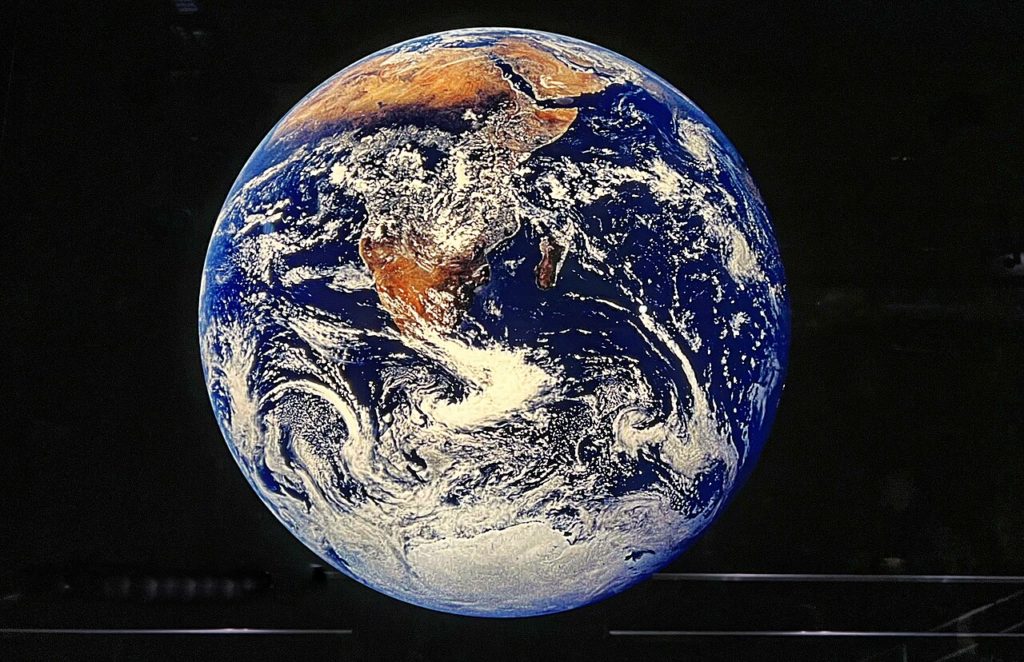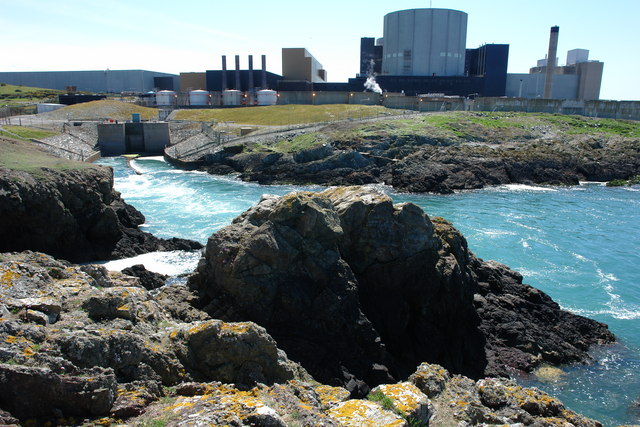The History of Energy part six: Our current dilemmas

We are pleased to continue the series in which Gareth Wyn Jones, Professor Emeritus of plant biology and bioscience at Bangor University considers the history of energy and asks what lessons it holds for today’s world. This is article number six.
Gareth Wyn Jones
The conclusions from the five previous articles are profoundly disturbing.
Both the historic record and theory suggest that accessing more, even low-carbon, energy or ever more efficient ways of using it may not , in reality, be a panacea. Indeed they seem likely to lead to both greater human disfunction and continuing planetary degradation.
The patterns we have been discussing suggest that more work and power will further accelerate the rate of change and generate more and more complex societies. Our demands on both renewable and non-renewable resources will also increase as will the pressures on the rest of the biosphere.
These trends will also likely lead to the emergence of new elites and almost certainly to an increase in the need for more regulation; quite possibly more intrusive and stringent regulation. This, at a time, when our digital expertise is making surveillance more pervasive.
The speed of change
Many troubling issues arise around how we should, indeed whether we can, manage these outcomes and cope with the speed of change and its consequences.
What sort of society might emerge, locally and globally? What of those currently poor and dispossessed? What of the rest of life on this planet? What type of society do we actually desire? Are we trapped by the current story and its actors? Do we have both a coherent vision and the determination to implement it?
Undoubtedly some will argue that our technological skills, ingenuity and entrepreneurism will provide solutions and allow our current social assumptions and the model of unlimited, exponential economic, consumerist growth to continue and spread. But, in truth, the evidence for such a view is not convincing.
Essential systems
I have previously argued that the homeostatic regulatory systems which allow humans to live together in relative harmony are derived partly from our intrinsic, behavioural characteristics evolved over our long pre-human and human past and the laws, rules and conventions that we have developed, many quite recently and post the industrial revolution.
These are essential to sustain our lives both as individuals and members of civilised communities. Such systems, of course, vary widely among human societies and cultures and over time. There is no one inevitable right way.
And, crucially in these matters, we have agency; that is we humans, uniquely, can conceive of and plan for a desired future. Although it is wise not to ignore our hard-wired inherited behaviours or how they can be manipulated.
Self-sustaining technologies
It is important to place our current global heating crisis in this frame work as well as the complex technical and economic issues that must necessarily exercise us.
Indeed we must, over the next decade or so, find sufficient very low carbon energy to maintain human society all over the world without ruining the planet and with it our own societies. But even that will not, of itself, suffice.
Paradoxically, as well as the well-rehearsed scientific problems, our technological prowess is part of the problem in several ways.
First of all, technologies and their capabilities are to an extent self-sustaining. They have their own internal logic and drive.

I would offer nuclear power, such as Wylfa, is an example of this phenomenon. Nuclear electricity has largely been a failure as it has proved too expensive, too accident prone and produces contaminated wastes which will require thousands of years of careful management; an unresolved conundrum after well over 50 years.
Further it also is a poor match for the emerging, and cheaper renewable sources – solar, wind. The latter suffer from intermittency and seasonality but nuclear electrical generation works best when output is constant.
The characteristics of nuclear generation are not complementary to the intermittent renewables. Surely events in Zaporizhzhia should convince everyone that, in a world of growing civic strife, building thousands of atomic power station is too great a risk to be contemplated.
What might have happened to such stations in built Aleppo before the catastrophic Syrian war or Maidurugi, before the rise of Boko Maram: cities of which I have first-hand experience?
Nevertheless the idea is backed by major politicians and players within the military-industrial complex, as first identified by Eisenhower, and by centralised planners, be they capitalistic or communistic or the old CEGB.
Paradoxically this backing is related to commitment to the fearsome power of and preferential use of plutonium in atomic bombs not as timely response to climate change.

Surprises
Our technological history is also littered with surprises; both known and unknown unknowns. James Watts and Matthew Bolton would be staggered to realise not only the increased prosperity their invention, the steam engine presaged but that we are, as consequence, now facing climate catastrophe.
Globally there is a growing assumption that in order to achieve net zero (or even an approximation thereto), the capture and storage of atmospheric carbon dioxide on a massive scale will be required; that is finding ways to suck CO2 out of the atmosphere and store it out of harm’s way for centuries.
Promoting such a scenario suits the powerful oil and gas interests, fossil-fuel rich countries and right-wing, laissez-faire economists and politicians. It will for certain feature strongly in COP 27 in the Emirates next autumn. However the technology is itself in its infancy, currently very expensive and full of known and unknown unknowns.
Risky interventions
All the scientific evidence shows that the global atmospheric and oceanic circulations that control local weather patterns are sensitive to change in unpredictable ways – chaotic in its scientific sense.
Yet we are contemplating massive, highly risky interventions because of special interests and our reluctance to change our life styles and inability to face reality. Humans would do well to avoid hubris. But such presumption is certainly embedded in Western, individualistic, laissez-faire society and, maybe, in our humanity. Sages and prophets from all religions, cultures and eras have warned of its dangers. Few have listened.
The rate of accelerating change brings its own problems. Joseph Schumpeter famously wrote of the modern economy as a “gale of creative destruction” and a “process of industrial mutation that continuously revolutionizes the economic structure from within, incessantly destroying the old one, incessantly creating a new one”.
An obvious question is, as this process is continuing to accelerate as result of AI and miniaturization, how will our humanity fare? In Wales, as worldwide, we are devoted to our own ‘milltir sgwar’, to our own identities and crave a degree of stability. Can we cope with this ever increasing speeded change and, crucially, being incidental and expendable cogs in an unrelenting cycle of economic destruction and re-construction?
This cycle almost completely out of the control, not just of individuals and communities, but of many nations. Power centripetally accrues to a few locations and individuals. Governments compete to attract investments. I’ve read that the UK government has offered near a £1billion to tempt an Indian company to build a factory make EV car batteries in Somerset.

Tensions
A few prosper mightily but many are left behind at great psychological and social cost. In the Tyranny of Merit, Michael Sandel argues that this over emphasis on merit and competition not only exclude the many but create a huge tensions and conflict among the successful, giving them both an undeserved sense of entitlement and many social hang-ups.
This I would argue is also a major problem for combating climate change:- so ‘If I can afford to hire a private jet for a weekend break in the Caribbean, why should I worry about anyone else?’
Human regulatory systems inevitably take time to evolve and mature and take time to change. It is arguable that we are already not keeping up with the rate of change.
We have so far failed to find an appropriate regulatory balance for the emergent social media to detriment of many, especially young people – social poison, misinformation and conspiracies abound. There is near panic in seeking to control the potential misuse of AI.
James Lovelock in his last book The Novacene had an unique perspective. He envisaged the emergence of a hyper intelligent, AI-grounded, cyborg elite which humanity should and would be happy to serve in the interest of Gaia.
I view his vision with dread. It is an outcome which we should use all our human agency to avoid. That said, it is not inconsistent with the trends I am discussing in these articles, if taken to one possible logical conclusion.
Planetary burden
A few points need emphasis. The greater the human population the greater will be the burden placed on this planet’s resources. The poorest will quite legitimately seek a better life and richer people will resist any change in their status. If we have plentiful cheap energy, the greater the demand will be for goods of all kinds; each of these will have their own material as well as energy foot print.
The cost and viability of energy also determines which material resources are economic to exploit. So unlimited cheap energy will allow poorer will be the mineral resources we can mine and extract economically and more habitat destruction.
Similarly given the atmospheric physics and chemistry of CO2, the larger the population, the smaller will be the average carbon amount/ration? available to each of us; noting also that this total has to fall rapidly. Or, alternatively, the greater will be the inequality between those with the capacity to command a disproportionally large share and the rest.
Population growth
It follows that the stabilization of both the total population and decreasing the resource demands of the wealthy are priorities. Fortunately the rate of population growth is beginning to level off. This positive development will necessarily mean an aging population; fewer young and proportionally more old people. In a number of counties the population is already actually decreasing.
Such a voluntary trend should be welcome. But it is not a welcome truth within the modern economic growth model and a source of embarrassment to the UK government both wanting and not wanting youthful immigrants to keep the system functioning.
There are also some welcome signs that some countries are severing the historic link between total energy consumption and economic growth as measured by GDP. However more generally greenhouse gas emissions are closely related to wealth either on an individual or country basis and it follows that the majority of the cuts must inevitably come from the better off.
Global emissions
The core dilemma can be illustrated readily. Currently the global population of about 8 billion emits over 50 billion tonnes of greenhouse gases each year (expresses in terms of CO2 equivalents, that is combining the impact of all the gases); that about 6 to 7 tonnes per person on Earth per year.
But per head annual country emissions vary from >25 tonnes and more to below 0.1 tonne. [USA and Australia ~15; China ~8, India ~2, many African countries 0.1 and below]. Some 30% of these emissions come from land use, land use change, making agrichemicals and the rest of the food chain (carbon dioxide, methane and nitrous oxide). The global population is expected to be around 10 billion by mid-century.
Even optimistically it seems improbable that we will reduce emissions to below 1.5 tonnes per head per year and still feed the world. We must also create the ‘energy-space’ to allow the very poor to have a better life and maintain a viable society. So we may be left, even if countries really press hard for rapid emission’s reductions, with residual annual global emissions of around 10 to 15 billion tonnes.
Carbon capture runs currently at about $100 to $200 per tonne so only 10 billion tonnes annually (i.e. about I tonne per head) would cost, at the lower estimate, $1 trillion per year. Such capture and storage processes (CCS) are as yet at the pilot state and, as I’ve noted highly risky and full of known and unknown unknowns and will be difficult to implement in time.
The core dilemmas are quite apparent with no easy answers but I suggest that saving energy – seeking positively to reduce energy use – seems a good bargain as well as consistent with the concepts I’ve been exploring.
Read all the previous installments of The History of Energy here.
Support our Nation today
For the price of a cup of coffee a month you can help us create an independent, not-for-profit, national news service for the people of Wales, by the people of Wales.







Interesting and agrees with what I have learned over last few years. Nuclear will have a role, but a small one at the behest of big governments and industry. Carbon Capture and storage is a con, technology in sector has not really changed in decades, uses too much energy and is unproven, being used by oil & gas companies as justification for trashing the Earth. Over complication of systems and linkages and limited numbers of people capable of understanding and manipulating those systems leaves us in dire straights with any black swan event.